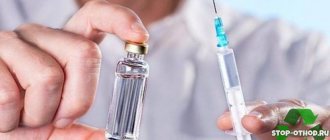How to choose Silica gel filler?
How to choose silica gel filler
- There should be as little silicate dust inside the package as possible. To do this, it is better to take filler with large silica gel crystals.
- It is recommended to use white silica gel as it is non-toxic.
Interesting materials:
Is it possible to withdraw money from the card if I forgot my password? Is it possible to take out a mortgage loan if you have an apartment? Do I need to descale trout? Do I need to peel brown mushrooms? Do I need to defragment a disk if it has an NTFS file system? Do I need to make holes in orchid pots? Do adult dogs need vaccinations? Do I need to pay extra for luggage on the bus? Does the new CD need to be formatted? Do you need to warm up your car before driving?
Restoring properties
There are three stages of regeneration:
- cleaning;
- desorption;
- cooling.
Silica gel technical
Silica gel is restored in chemical laboratories, in industry and at home. The sorbent is dried in laboratories at t = 150–170 ° C for three to four hours; at home, the product is reconstituted in the oven at a temperature not exceeding 170° C. To speed up the drying process, the temperature is often increased. This may result in product damage. Silica gel will not absorb moisture.
The regeneration method is chosen depending on the environment in which the material worked. There is hot and cold drying of the sorbent.
Choosing an electric dryer
In recent years, many new electrical appliances have appeared on the market, which differ from each other in the functions they perform. Among them there are also devices that can be used to dry wet shoes. But since such devices are presented in a large assortment in stores, it is very important to know how not to make a mistake with your choice. To do this, you should find out what characteristics should be taken into account when purchasing an electric dryer:
- First of all, you need to pay attention to the material from which the device is made. It is recommended to choose only those devices that have high quality. It is very easy to determine this - just look at its appearance;
- it is also necessary to carefully examine all the parts - they must be tightly screwed, the presence of cracks, backlashes, traces of glue or burrs is unacceptable;
- When examining the power cord, you need to make sure that it is double insulated, and the cable itself must be flexible, thin enough and have protection at the base. You also need to make sure that the power cord is of sufficient length. If at home it turns out that it is not enough for comfortable use of the device, then you will need to additionally purchase an extension cord;
- Among the presented models, it is best to give preference to devices that use a ceramic heating element. This is a guarantee that drying will take place safely and require a minimum of time;
- the device body must have special openings for unhindered air circulation. This design solution ensures faster drying of wet shoes;
- At the time of purchase, it is recommended to find out how long it takes to heat up the device. This information can be found in the instructions for the electric dryer. It is recommended to choose those models that have a minimum heating time. For good dryers, it should not exceed 15 minutes. If the device requires 20 minutes or more to heat up, then you should find a more suitable model;
- It is imperative to find out to what temperature the device can heat up. The optimal temperature is considered to be in the range from 50 to 60 degrees Celsius. It is not recommended to buy devices with higher temperature values, otherwise after such drying the shoes will completely deteriorate. In addition, higher heating temperatures require more electricity.
The situation when your sneakers get wet can happen to anyone. And here you need to know how to quickly get out of such an unpleasant situation. Those who think that you can dry wet shoes on a radiator or next to an oven are greatly mistaken. These drying methods can completely ruin your shoes, so you need to find out in advance how to dry your sneakers after washing them in the machine without causing serious damage to them.
There are many means and methods that allow you to quickly dry wet sneakers. They all have their own nuances, so before using a specific one, you should study the specifics of their use so that the drying result does not disappoint.
Industrial recovery of silica gels
For the industrial reduction of silica gels used for the purification of mineral oils, it is advisable to use units of the BRPS type from the GlobeCore brand. This equipment is designed for washing sorbents with superheated steam and removing the absorbed substance by thermal desorption using special electric heaters.
BRPS installations have the following advantages:
- make it possible to almost completely restore the operational parameters of not only silica gels, but also other sorbents, including zeolites;
- extend the service life of silica gels;
- mobile and easy to use;
- directly connect to cartridges filled with silica gel.
BRPS units can operate in steam washing, drying or evacuation and cooling modes.
GlobeCore's sorbent regeneration processes extend the service life of various absorbents (silica gels, zeolites, bleaching earths, etc.), which saves money and reduces environmental burden.
Silica gel (gel dried using a special technology) is an excellent means for drying gases and various things. It is able to absorb moisture and retain it in itself. Silica gel becomes damp, and drying and other types of regeneration make it functional again. Therefore, periodic drying of silica gel is necessary, especially if the moisture content of the sorbent begins to exceed 3%.
What is silica gel?
Silica gel is a dried gel obtained by supersaturating a solution of silicic acids. By its physical nature, it is a hydrophilic sorbent with a large surface area.
The main industries in which silica gels are used are the drying of air and other industrial gases, various liquids, including industrial oils, desulfurization of petroleum feedstocks and removal of tarry substances from oil.
Did you know that the substance “silica gel” was discovered back in 1640?
Regeneration plants
To restore the product use:
- installation AD-220;
- cabinet type ShSTs-15B;
- BRPS design;
- UVS complex;
- drying cabinet SNOL TU and others.
In production, silica gel is restored using special equipment. The structure consists of a cast iron tank, oven and blower. Silica gel is loaded into a cast iron tank.
An electric oven is used to heat the air. Air enters the container with the adsorbent through the holes located at the bottom of the tank. The heating temperature of the furnace is 200–250° C.
The AD-220 installation consists of the following elements:
- electric spirals;
- coils;
- filters;
- temperature relays;
- air collector;
- needle valve;
- humidity indicator;
- gearbox
Cabinet type ShSTs-15B has the following advantages:
- automatic temperature support;
- increased sealing (presence of a screw lock).
On an industrial scale, BRPS units are used for the regeneration of adsorbents. The adsorbent is treated with high frequency currents. The ETMA MTSU-7-U1 installation can be operated by one person.
The heating temperature of the previously used material is 150–180° C. The device consists of the following elements:
- control cabinet;
- heat exchanger;
- power supply;
- generator;
- fan;
- condensate collector;
- vacuum pump.
BRPS units completely restore the properties of the material and extend the service life. The equipment is mobile. Operating the BRPS complex is quite simple.
Silica gel is processed under vacuum with high frequency currents. This allows the processing temperature to be reduced, which extends the service life of the sorbent.
To restore and dry the material, a UVS device is used. The equipment consists of a cylindrical container in which there is a container with an adsorbent. The height of the device is 1.6 m, and the weight is 380 kg.
The SNOL drying cabinet is equipped with a thermostat. The equipment is used in factory laboratories. To restore the quality of the material, various methods and devices are used. It is important to use protective equipment and observe TB.
Drying silica gel by blowing dry air
One of the most effective industrial recovery methods is drying the silica gel by blowing dry air. In laboratory conditions, the regeneration of this sorbent is carried out by heating to 150-170ºC in a drying cabinet for 3-4 hours.
After household use, the properties of silica gel can be restored by drying the substance on a radiator or in the oven. It is necessary to maintain the temperature no higher than 170ºС.
American W. A. Patrick patented the synthesis reaction to make silica gel in 1919.
Properties and features of silica gel
Silica gel or silica gel is available in various types and forms. It can be coarse or finely porous, lump or granular. In the latter case, granules are produced in large and small forms. Household products are usually accompanied by a fine granular gel. The granules are placed in a bag or bags. You can find exactly these bags of balls in shoe boxes.
The adsorption properties of silica gel, first of all, consist in the effective absorption and absorption of moisture. Storage and transportation of goods leads to sudden changes in temperature and increased humidity, which can adversely affect the quality of packaging and product. To avoid this, manufacturers put bags or sachets of silica gel in a box or other container.
Silica gel quickly absorbs excess moisture and prevents damage to items during transportation or storage. In addition, a powerful adsorbent protects metal devices and products from corrosion and rust. This preserves quality and extends the service life of goods.
In addition to moisture absorption, silica gel is used for drying air, oxygen and gases used in industry. In addition, it absorbs vapors, unpleasant odors and hazardous substances that are in the air.
Bags of balls, which are placed in shoes or boxes with other goods, can also be used in everyday life. However, it is important to keep the product away from fire, children and animals. They are explosive, and if they enter the body they lead to poisoning and other negative consequences.
We learned why these balls are needed in the production, storage and transportation of various goods. Now let's look at the use of silica gel in domestic and domestic conditions.
Drying rules
When working with the material, the following rules must be observed:
- Maintain temperature conditions.
- Stir the product during regeneration.
- Wear protective gloves and goggles.
- Do not use open coils or fire.
Drying time at home varies from a few minutes to four hours. This depends on the temperature and thickness of the sorbent layer. It is not recommended to heat the material above 200° C.
Repeated use of the adsorbent is economically beneficial. Regeneration of the material extends its service life.
What can you do with Silica Gel?
How to use a silica gel packet from a shoe box
- Dry Flowers Silica gel packets can preserve a bouquet of flowers you received as a gift by absorbing moisture from them. ...
- Dry your makeup bag...
- Freshen up your gym bag...
- Dry things in your suitcase...
- Prevent rust on cutlery...
- Dry your smartphone...
- Extend the life of your razor...
- Neutralize the smell of old books
30 Jun 2015
Why is silica gel dangerous?
Silica gel is fire- and explosion-proof; in terms of the degree of impact on the body, it belongs to substances of the 3rd hazard class. Silica gel dust contains from 10 to 70% free silicon dioxide; chronic inhalation of such dust may lead to the development of lung disease - silicosis.
Drying the silica gel is necessary after using the sorbent to absorb moisture. This process is part of the regeneration of silica gel.
How does silica gel change color?
Changes color: as moisture is absorbed, it becomes red... Indicator silica gels are KSMG impregnated with various salts, which change the color of the granules as they become hydrated. KSMG stands for “large fine-porous granular silica gel”
Interesting materials:
Who doesn't need a cash register in 2022? Who doesn't need a cash register in 2022? Who shouldn't eat fresh apples? Who shouldn't have baked apples? Who should not use an exercise bike? To whom does the Occupational Safety and Health Service at the enterprise directly report? Who needs a waybill 2022? Who needs a special account? Who needs a Consumer Corner? Who needs to use CCT?
Regeneration of silica gel in industry
The widespread use of synthetic adsorbents for drying rooms, gases, as desiccant absorbers during the storage of various products, as well as for deep drying and purification of various organic substances, oils, and refrigerant oil mixtures is more economical with the repeated use of regenerated adsorbents.
If you use silica gel, this material should be replaced regularly.
Regeneration is the process of restoring the working properties of the adsorbent (in this case, silica gel) after using it for drying or cleaning.
Regeneration includes two stages:
1. Desorption is the reverse process of adsorption, i.e. removal of adsorbent from the adsorbent.
2. Cooling of the adsorbent after desorption.
It should be noted that the regeneration process is a very important stage, because largely determines the economics of separation and purification of gas and liquid mixtures (approximately 60-70% of all energy costs occur at the regeneration stage). The degree of drying or purification of gases and liquids largely depends on how effectively the regeneration was carried out.
rice. 1 Dependence of the depth of gas drying with fine-porous silica gel KSM-5 (residual humidity c) on regeneration conditions (t, W)
Depending on the purpose for which the silica gel was used, the choice of the desorption stage depends. When using silica gel as a desiccant for drying rooms, gases, and storing various products, desorption consists of dehydrating silica gel soaked in moisture. The drying depth depends, first of all, on the regeneration temperature, and at low temperatures - on the humidity of the purge gas W (Fig. 1). The curves corresponding to different humidity of the purge gas (from 1000 to 21500 ppm) are exponential character and residual moisture content as the regeneration temperature increases asymptotically tends to a certain limiting value (10 parts per 1 million). This value of moisture concentration in the vapor phase apparently corresponds to the complete removal of physically adsorbed water from the pores of silica gel. At regeneration temperatures above 1600C, complete regeneration of silica gel is achieved regardless of the humidity of the purge gas.
The degree of drying of gases with silica gels is determined on the basis of a diagram constructed taking into account adsorption isotherms (Fig. 2).
rice. 2 Diagram for determining the residual moisture content in the gas after drying with fine-pored silica gel, taking into account the regeneration conditions (temperature and humidity of the purge gas)
Let's give an example of using the diagram. Let the silica gel be heated to 1350C during regeneration as a result of blowing with a moist gas in which the moisture concentration is 1000 parts. by 1 million We draw a perpendicular with = 1∙103 parts. by 1 million until the intersection with the 1350C isotherm. The moisture content in the adsorbent after regeneration is determined on the ordinate axis in accordance with the position of the intersection point. It is equal to about 1% (mass.). In turn, the intersection points of the line of constant moisture content of silica gel with the curves 25 and 500C allow us to obtain on the abscissa axis the values of the residual moisture content in the gas at the drying stage: 11 parts. per 1 million at 250C and 28 parts. per 1 million at 500C.
If silica gel was used for drying and purification of various organic substances, such as freons, various oils, oil-refrigerant mixtures, etc., then the repeated use of adsorbents, first of all, requires the removal of the components of the purified medium from the outer surface and from the volume of secondary pores of the adsorbent granules before thermal processing. In this case, the regeneration stage can be carried out in several stages; Various methods for removing adsorbed substances from the surface are added to the heat treatment of silica gels. The choice of a suitable regeneration method will depend on the environment in which the silica gel was working. If for highly volatile substances, such as refrigerants and organic solvents, this does not cause significant technological difficulties and their removal is easily carried out by vacuuming or blowing, then when removing highly viscous substances, such as oils, significant difficulties arise. The oil remaining on the outer surface and in the secondary porous structure of the granules becomes coked during thermal desorption. This process is accompanied by the combustion process. As a result, the activity of the adsorbent decreases and the adsorption kinetics worsens.
Methods for removing adsorbed substances from the surface of an adsorbent are varied: firing in an oxidizing environment, blowing with water vapor, washing with a solvent. During firing, the adsorbent is blown with air at temperatures up to 2000C and the bulk of the oil flows off the adsorbent without ignition. Then the regeneration temperature is raised to 500-6000C. Thermal desorption is associated with oil loss and can be accompanied by changes in the molecules of released substances due to catalytic transformations at elevated temperatures, causing the accumulation of coke-like products and resins in the porous structure of the adsorbent.
When regenerating adsorbents after drying highly volatile organic substances (for example, carbon tetrachloride, freons, etc.), before heat treatment, purging with an inert gas is carried out at a temperature usually no more than 80-900C. When used silica gel is regenerated with a hot solution of calcined salt with various surfactants, the oil is released from the adsorbent and floats to the top. The silica gel thus treated is dried with hot air.
Washing adsorbed oils with solvents (for example, gasoline, acetone, etc.) is a more advanced process. Since the use of these solvents is associated with an increased fire and explosion hazard, it is more advisable to use non-flammable solvents for cleaning, for example, trichlorethylene or freons.
rice. 3 reduction in the activity of silica gels
Desorption processes can be carried out periodically (in devices with a fixed layer of sorbent) and continuously (in devices with a moving layer of adsorbent) in adsorbers. Moreover, the latter have found limited use. To create a continuous process, blocks of adsorbers are used, in which each adsorber consists of one cycle or another (adsorption, desorption, drying and cooling). Such blocks can be four-, three- and two-sorber.
During the operation of adsorption plants, the adsorption capacity of silica gels decreases. This is explained by the fact that as a result of multiple repetitions of alternating cycles of adsorption and desorption, a decrease in the active adsorbing surface of the absorber occurs, caused by mechanical abrasion of sorbent particles, cracking, dusting and destruction, and poisoning of the sorbent by impurities that are not removed during desorption.
Figure 3 shows a generalized dependence of the decrease over time in the relative static activity of silica gels, constructed on the basis of experimental data.
The static activity of all dryers decreases with increasing adsorption operating temperature. Zeolites are subject to this effect to a lesser extent than silica gels, the static activity of which is significantly affected by the process temperature (Table 1)
Table 1
| Working temperature round of processes, 0C | 20 | 25 | 30 | 35 | 40 | 45 | 50 | 55 |
| Relative static activity, % | 100 | 97,1 | 93,9 | 89,7 | 84,7 | 79,1 | 71,3 | 57,1 |
The calculated static activity of the silica gel should be such that an economical service life of the absorber can be obtained. Taking into account the data in Fig. 3 and Table 1, the calculated activity of the adsorbent should not exceed 60% of the passport data of commercial absorbers. Usually in design calculations it is assumed that the static moisture activity of silica gel is 7-9 kg H2O / 100 kg of desiccant. Under normal operating conditions, the economical service life of silica gel is 1 to 3 years.
Literature:
1. Keltsev N.V. “Fundamentals of adsorption technology”, M., CHEMISTRY, 1984.
2. Malkin L.Sh., Kolin V.L. “Drying and cleaning of small refrigeration machines”, M., Light and food industry 1982.











